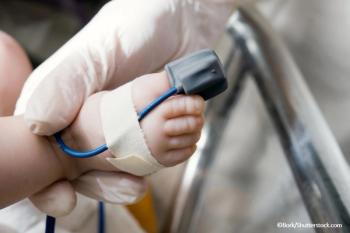
ICAAC: Investigational Integrase Inhibitor Reduces HIV Load
SAN FRANCISCO -- In highly treatment-experienced HIV patients, an investigational integrase inhibitor sharply reduced viral loads compared with placebo, researchers reported here.
SAN FRANCISCO, Oct. 2 -- In highly treatment-experienced HIV patients, an investigational new integrase inhibitor sharply reduced viral loads compared with placebo, researchers reported here.
MK-0518, being developed by Merck, was generally well-tolerated, said Robin Isaacs, M.D., the company's executive director of infectious disease and HIV vaccine research, at the Interscience Conference on Antimicrobial Agents and Chemotherapy.
"We're very excited about this," he said. "We think it has a lot of potential."
Merck's drug is one of two integrase inhibitors in late-stage development. Gilead Sciences of Foster City, Calif., also has a product in clinical trials. Both agents target the stage in HIV replication in which the virus integrates its genetic code into the DNA of the host cell.
In the randomized, placebo-controlled study of MK-0518, Dr. Isaacs said, interim results from 178 patients showed that it effectively lowers viral load, in conjunction with an optimized background of other anti-retroviral drugs.
The trial is a 48-week dose-ranging study with four arms -- placebo, or MK-0518 at 200, 400, or 600 mg twice daily, combined in all cases with an optimized background regimen.
To be eligible, patients had to have resistance to at least one drug in each of the major classes, a viral load greater than 5,000 copies of viral RNA per milliliter of blood, and a CD4 count of greater than 50 cells per microliter of blood.
"The vast majority have had a diagnosis of AIDS," Dr. Isaacs said.
At the 24-week midpoint, Dr. Isaacs said, 16% of placebo patients had reached a level of fewer than 400 copies per milliliter of viral RNA. In contrast, between 70% and 73% of the MK-0158 patients had reached hat level, depending on the dose.
The differences between drug doses were not statistically significant, but the difference between all of the MK-0158 arms and the placebo arm was significant at P<0.05, he said.
A more rigorous test was the proportion of patients whose viral load dropped below 50 copies per milliliter of blood "which some people call undetectable," Dr. Isaacs said. On that scale, 13% of placebo patients achieved the mark, compared with between 57% and 66% of MK-0158 patients depending on dose.
He added that the adverse events were similar among all four arms.
"The data look very promising," he said, "bearing in mind this is only the 24-week data."
Scott Hammer, M.D., chief of infectious diseases at New York Presbyterian Hospital of Columbia University, commented that he expects to see the drug graduate from clinical trials soon.
"It is moving along nicely with a good safety profile and excellent efficacy," said Dr. Hammer, who was vice-chair of the program committee for this meeting.
Study leader Beatriz Grinsztejn, M.D., Ph.D., of the Evandro Chagas Clinical Research Institute in Rio de Janeiro, said the full 24-week data confirm partial results that were presented at the Conference on Retroviruses and Opportunistic Infections earlier this year.
Dr. Isaacs said that two weeks ago the company began an extended access program for MK-0158 in the U.S. and will eventually be world-wide, so that patients in need can have access to the drug while it is awaiting approval.
Earlier this week, data showed that the lipid changes seen under some antiretroviral regimens do not appear to take place in treatment-naive patients given MK-0158.
When the drug was combined with Viread (tenofovir) and 3TC (lamivudine), levels of total cholesterol and triglycerides did not change after 24 weeks of therapy, according to Hedy Teppler, M.D., also of Merck.
In contrast, both levels increased in patients treated with the same two drugs plus Sustiva (efavirenz), Dr. Teppler said.
In the randomized double-blind trial, MK-0158 patients had a mean decrease in cholesterol levels of from 2 mg/dL to 7 mg/dL of blood, depending on the dose, while Sustiva patients had a mean increase of 19 mg/dL.
Across all the MK-0158 groups, the difference was statistically significant at P<0.05, she said.
Meanwhile, Sustiva patients had a mean increase from baseline in trigylcerides of 47 mg/dL. In contrast, change in the MK-0158 patients ranged from a mean increase of 2 mg/dL to a decrease of 43 mg/dL.
Newsletter
Enhance your clinical practice with the Patient Care newsletter, offering the latest evidence-based guidelines, diagnostic insights, and treatment strategies for primary care physicians.



















































































































































































































































































